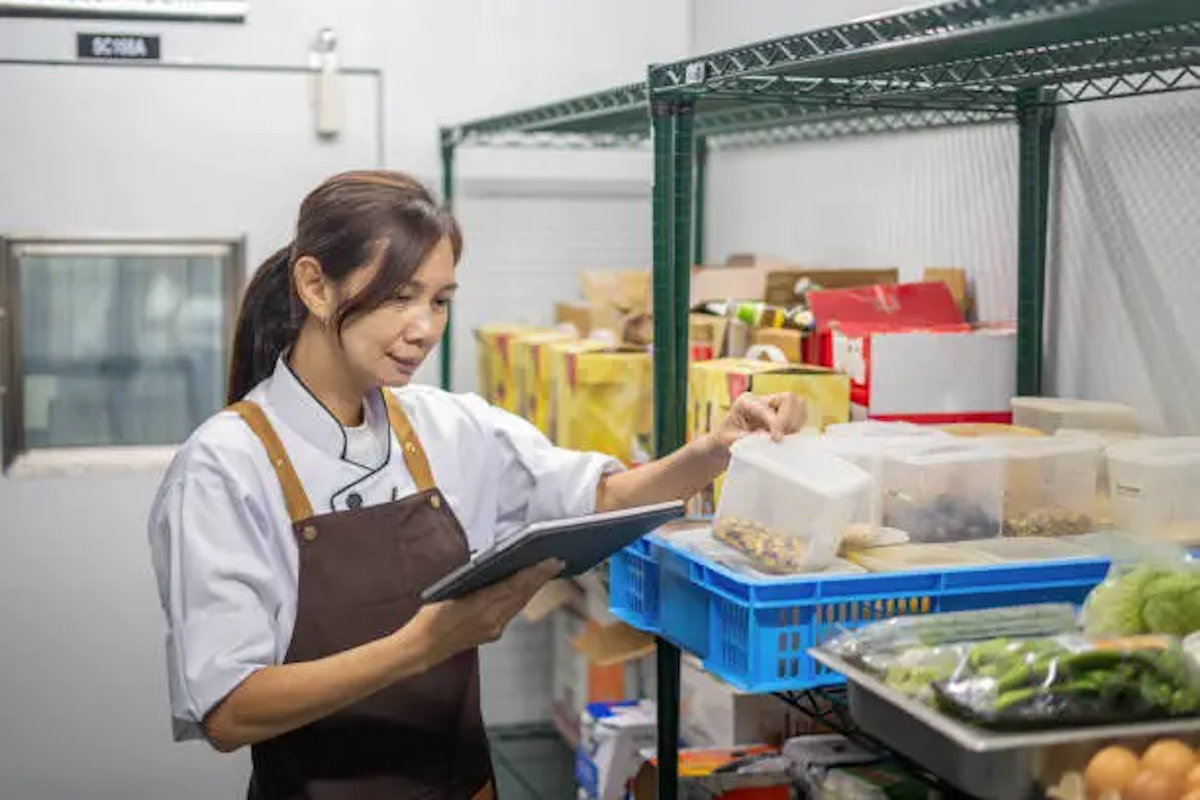What Is a Revenue Accountant? 9 Insights for Hiring One
A steady revenue stream signals a restaurant’s success. It builds a solid financial baseline that you can lean on when experimenting with new menu...
Platform
Combining online ordering, loyalty, omnichannel messaging, AI insights, and payments in one platform. Paytronix delivers relevant, personal experiences, at scale, that help improve your entire digital marketing funnel by creating amazing frictionless experiences.
A Complete Customer Experience Platform
Online Ordering
Acquire new customers and capture valuable data with industry leading customization features.
Loyalty
Encourage more visits and higher spend with personalized promotions based on individual activity and preferences.
Catering
Grow your revenue, streamline operations, and expand your audience with a suite of catering tools.
CRM
Build great customer relationships with relevant personal omnichannel campaigns delivered at scale.
Artificial Intelligence
Leverage the most data from the most customer transactions to power 1:1 marketing campaigns and drive revenue.
Payments
Drive brand engagement by providing fast, frictionless guest payments.
Solutions
We use data, customer experience expertise, and technology to solve everyday restaurant and convenience store challenges.
Contactless Experiences
Accommodate your guests' changing preferences by providing safe, efficient service whether dining-in or taking out.
Customer Insights
Collect guest data and analyze behaviors to develop powerful targeted campaigns that produce amazing results.
Marketing Automation
Create and test campaigns across channels and segments to drive loyalty, incremental visits, and additional revenue.
Mobile Experiences
Provide convenient access to your brand, menus and loyalty program to drive retention with a branded or custom app.
Subscriptions
Create a frictionless, fun way to reward your most loyal customers for frequent visits and purchases while normalizing revenues.
Employee Dining
Attract and retain your employees with dollar value or percentage-based incentives and tiered benefits.
Order Experience Builder
Create powerful interactive, and appealing online menus that attract and acquire new customers simply and easily.
Loyalty Programs
High-impact customizable programs that increase spend, visit, and engagement with your brand.
Online Ordering
Maximize first-party digital sales with an exceptional guest experience.
Integrations
Launch your programs with more than 450 existing integrations.
Loyalty Programs
Deliver the same care you do in person with all your digital engagements.
Online Ordering
Drive more first-party orders and make it easy for your crew.
Loyalty Programs
Digital transformations start here - get to know your guests.
Online Ordering
Add a whole new sales channel to grow your business - digital ordering is in your future.
Integrations
We work with your environment - check it out.
Company
We are here to help clients build their businesses by delivering amazing experiences for their guests.
Meet The Team
Our exceptional customer engagement innovations are delivered by a team of extraordinary people.
News/Press
A collection of press and media about our innovations, customers, and people.
Events
A schedule of upcoming tradeshows, conferences, and events that we will participate in.
Careers
Support
Paytronix Login
Order & Delivery Login
Resources
Learn how to create great customer experiences with our free eBooks, webinars, articles, case studies, and customer interviews.
FlightPaths are structured Paytronix software onboarding journeys designed to simplify implementation and deliver maximum ROI.
See Our Product In Action
E-Books
Learn more about topics important to the restaurant and c-store customer experience.
Reports
See how your brand stacks up against industry benchmarks, analysis, and research.
Blog
Catch up with our team of in-house experts for quick articles to help your business.
Case Studies
Learn how brands have used the Paytronix platform to increase revenue and engage with guests.
Is your brand tapping into these three unshakeable pillars of guest loyalty in 2025?
6 min read
Apr 17, 2025

A steady revenue stream signals a restaurant’s success. It builds a solid financial baseline that you can lean on when experimenting with new menu items, coordinating marketing campaigns to reach new audiences or navigating market disruptions.
Like most restaurants, your establishment likely brings in revenue from multiple sources. But without cohesive strategic planning across accounting duties, you face a heightened risk of inaccurate financial reports and missed opportunities to drive growth. You need a professional in the field to expertly handle your finances—a revenue accountant.
Throughout this article, we’ll answer the question: what is a revenue accountant, qualifications to look for, and how to find the right one for your restaurant. Let’s get started. 
Revenue accountants play an important role in your company’s financial health. They oversee all revenue-related transactions, organizing and structuring your revenue data to give you a clear sense of your restaurant’s income and make sure it’s accurately recorded. A revenue accountant oversees financial records, tax information, monthly revenue reports, and regulatory obligations. If your restaurant has a revenue manager, the two may work together closely.
Unlike a standard accountant, revenue accountants specialize in financial operations for money entering the business. You may also have an accountant who oversees a specific part of your finances or handles your annual taxes.
All revenue accountants complete the required educational background and professional certifications. It’s also a good idea to choose a revenue accountant with proven expertise working in your industry. Keep an eye out for these five qualifications:
It’s essential to hire a revenue accountant who knows the nuances of your industry. Their in-depth knowledge of restaurant or convenience store financial health means they can effectively manage your revenue and uncover opportunities to boost it.
Your revenue accountant’s responsibilities should revolve around your restaurant’s unique needs and expectations. But, at a baseline, these are their four key responsibilities:
Your revenue accountant will also be knowledgeable about standard accounting principles and compliance, such as generally accepted accounting principles (GAAP), revenue recognition standards, and Sarbanes-Oxley.
Revenue accountants leverage various tools and technologies to support your restaurant’s finances. Here are the four top resources they may use:
Technology helps financial management be efficient and accurate. Manual records are vulnerable to duplicates, missing information, or incorrect numbers. Your revenue accountant can let the software do the heavy lifting, allowing them to focus on interpreting the data and making recommendations to drive revenue.
Key Insight: Whether you’re new to revenue accounting or working to revamp old processes, artificial intelligence (AI) technology can help. Financial software that leverages AI can analyze large sums of historical data, organize vast income records, and provide valuable insights to help your accountant forecast future market conditions.
 The Impact of Revenue Accounting on Business Strategy
The Impact of Revenue Accounting on Business Strategy Your restaurant income determines how you create a business strategy. Anything you want to try, like creative marketing campaigns or experimental new menu items, hinge on your business’s ability to fund it. With good revenue accounting, you can feel confident that you’re making business decisions based on trustworthy financial reporting. Financial visibility gives you more control over how you reinvest profit into the business.
Let’s look at an example:
Say your profit margins are less than you hoped. You suspect that inventory costs are too high when compared to menu prices, but you need clear insight into your income versus cost to make impactful changes. Here are two steps a revenue accountant may take to help:
With an in-depth look into your revenue per menu item, you can compare it to your expenses for each menu listing. Subtract costs from income to get your profit margins for each item on your menu.
Now you know which items on your menu don’t generate enough revenue to justify their expense. Adjust your business strategy to cut costs and maintain more efficient inventory practices. If something on your menu doesn’t generate enough revenue for required expenses, consider replacing it with something more cost-effective.
In this example, your current revenue stream brought the possibility of overspending on inventory costs to your attention. Now, take this extra cash and reinvest it in the business to increase revenue. You could roll out a compelling loyalty program, invent new menu items, or run marketing initiatives that connect with new audiences.
Key Insight: If you want to put your increased revenue to use to attract more customers, check out our guide to Choosing the Right Loyalty Program for Your Restaurant.
Earlier we mentioned that you should look for a revenue accountant with expertise in the restaurant industry. Here’s a closer look at four key traits to look for:
When getting to know a potential revenue accountant, ask for specific past examples of how they handled challenges and the results of their efforts. Answers to these questions can give you a sense of how they would manage your restaurant’s finances, troubleshoot problems, and find new ways to increase revenue.
While a good revenue accountant will know the ins and outs of effectively managing income, it’s often helpful to familiarize yourself with revenue accounting best practices. Doing so allows you to assess your business’ financials and collaborate with your accountant. Here are the five best practices in revenue accounting:
Use these best practices to create a solid revenue accounting strategy but remember to stay flexible. As the industry changes, your restaurant’s needs shift, too. Staying competitive and profitable requires that you be agile, adjusting to consumer demand and industry trends.
Just as it’s important to implement revenue accounting best practices, it’s also crucial to know potential challenges. These are four common hurdles your revenue accountant could encounter:
One of the best ways to address all these challenges is by leveraging customized accounting software that connects to all your other systems. Financial data from across your business feeds into one place. It allows you to look at expenses and income side-by-side for a simplified cost analysis that shows where to reduce costs and increase revenue.
Check out our answers to common questions about revenue accountants below.
A revenue accountant tracks and manages a company’s income. They make sure a restaurant has an accurate record of all revenue for compliance, taxes, and financial reports.
Of all revenue accountant jobs, the highest paid is often the Chief Financial Officer (CFO). However, an accountant's salary depends on their educational background, professional experience, and related certifications.
Revenue duties refer to additional fees and taxes, often applied to foreign goods. They’re common on imported goods and intended to increase revenue.
To become a revenue accountant, you need a bachelor’s degree in finance or accounting, relevant experience, and knowledge of accounting systems. Specialized certifications may also be helpful.
The salary of an IRS revenue agent ranges from $40,000 to $100,000 per year. However, an accountant’s salary will depend on their educational background, professional experience, industry, and relevant certifications.
A revenue accountant is your go-to person for crucial financial insight into your restaurant business. To remain profitable, you must have a firm grasp of your income and expenses. By working with a revenue accountant, you can rest assured your revenue financial reports are reliable and accurate, so you can focus on growing other parts of the business.
Paytronix can help you find impactful and measurable ways to leverage an increase in revenue. With strategic marketing initiatives and reward programs, our software and experts support restaurants aiming to expand their customer base, improve brand perception, and find new avenues to drive revenue.
Sign up for a demo to see how Paytronix can help turn extra revenue into sustainable business growth. 

A steady revenue stream signals a restaurant’s success. It builds a solid financial baseline that you can lean on when experimenting with new menu...
![Average Pay for Restaurant Managers in QSRs and FSRs [2025]](https://www.paytronix.com/hubfs/Average%20Pay%20for%20Restaurant%20Manager.png)
Ask a restaurant owner, "What's your biggest challenge in 2025?" and they'll probably say, "Hiring and retaining employees." Fortunately, good...

Running a restaurant means juggling a lot behind the scenes, and stock management is one element you can’t afford to get wrong. Keeping track of...